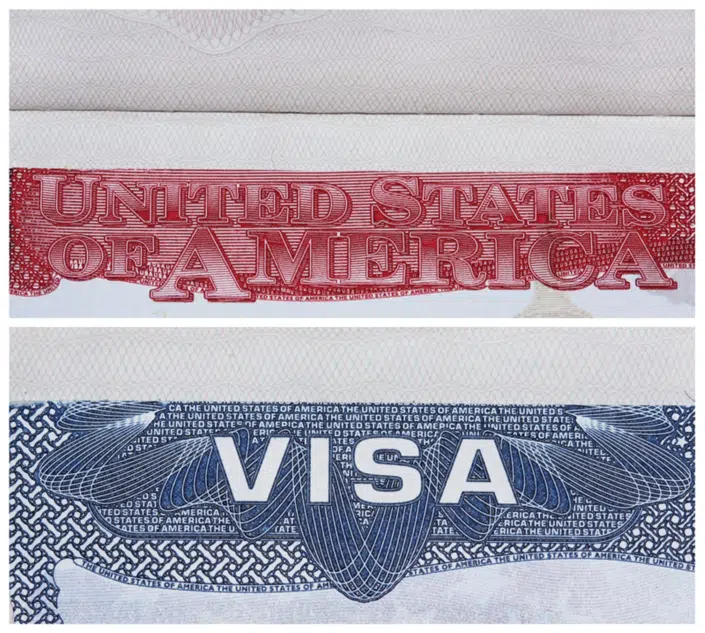LEARN FROM A BOARD CERTIFIED SPECIALIST HOW TO OBTAIN A GREEN CARD WITH AN EB-5 VISA, OR HOW A U.S. BUSINESS CAN RAISE EB-5 CAPITAL.
The Evolving Landscape of EB-5 Investment Immigration
Investment immigration has been on an upward trend for more than two decades. The Immigrant Investor Program, also known as the EB-5 Visa Program, was established by the U.S. Congress in 1990 under the Immigration Act of 1990 or IMMACT90. Its primary purpose: to stimulate the U.S. economy through job creation and capital investment by foreign investors.
The EB-5 program initially offered incentives for investments in Targeted Employment Areas (TEAs), including rural areas and regions experiencing high unemployment. This included reducing the minimum investment from $1 million to $500,000. Over time, adjustments have increased the minimum investment to $800,000 in TEAs and $1.05 million in other areas.
The Introduction and Evolution of Regional Centers
In 1992, Congress sought to increase the impact of the EB-5 program by introducing the Regional Center Pilot Program. These privately-run entities were designated to promote economic growth and job creation within specific geographic and industry sectors. Crucially, they could include indirect and induced job creation in their calculations, enabling a broader economic impact.
The success of the pilot led to its reauthorization and eventual rebranding as the Regional Center Program in 2012. Congress also reserved 3,000 visas specifically for investments made in USCIS-designated Regional Centers, encouraging further participation by investors and developers in this avenue of the EB-5 program.
EB-5 Reform and Integrity Act of 2022 (RIA): Key Changes and Implications
The EB-5 program has undergone a transformation with the passage of the EB-5 Reform and Integrity Act of 2022 (RIA). This landmark legislation bolsters transparency, ensures integrity, and fortifies the stability of the EB-5 program. In addition, it reaffirms the Regional Center Program with a 5-year reauthorization, ensuring its continuity. Importantly, the RIA protects the rights of pre-existing investors, sets revised guidelines for investment amounts, visa allocations, and provides a clear definition for infrastructure projects.
Key Changes Introduced by the RIA
To better grasp the implications of the EB-5 Reform and Integrity Act of 2022, we’ve summarized the key changes for developers and investors in the table below:
| Change | Description | Implication for Developers | Implication for Investors |
|---|---|---|---|
| Grandfathering of Pre-existing Investors | The RIA ensures that all pre-enactment investors retain their eligibility as of the time they filed their I-526 for both I-526 and I-829 adjudication. | Developers can maintain confidence in ongoing projects involving pre-enactment investors. | Pre-enactment investors retain their eligibility, ensuring a smooth transition amidst legislative changes. |
| Investment Amounts | The minimum investment is now $800,000 in a Targeted Employment Area (TEA), with the amount increasing to $1,050,000 in non-TEA regions. | Developers in TEAs will likely see an increase in potential investors due to the lower minimum investment requirement. | Investors now have clarity on the minimum investment amounts and can plan their investments accordingly. |
| Reserved Visas | Visas are “reserved” each fiscal year: 20% for rural, 10% for high unemployment, and 2% for infrastructure. Unused reserves carry over to the next year. | Developers in rural areas, high unemployment areas, and infrastructure projects can benefit from a dedicated pool of visas. | Investors targeting these specific areas have an increased likelihood of visa availability. |
| Definition of Infrastructure Projects | Infrastructure projects are defined as capital investment projects administered by a government entity for public works. | Developers working on public works projects can now qualify for EB-5 financing. | Investors now have the opportunity to invest in government-backed infrastructure projects. |
| Investment Arrangements | Certain USCIS interpretations under prior law are locked in by statute, including prohibited redemption and debt arrangements, and gifted and loaned investment funds. | Developers need to ensure their investment arrangements comply with the new statutory definitions that impact them under U.S. Securities investment law and U.S. immigration law. | Investors should be aware of the accepted types of investment funds and arrangements. The RIA has established requirements for issues such as redeployment, unlike before in prior versions of the law. |
| Concurrent Filing | Investors and their families already legally in the U.S. and eligible for a visa number may concurrently file applications for adjustment of status along with or while awaiting adjudication of the investor’s I-526 petition. | This provision doesn’t directly impact developers, but it may increase the attractiveness of the EB-5 program, potentially drawing more investors. | This streamlines the process for investors already in the U.S., expediting their ability to adjust status and avoiding consular visa processing. |
| Priority Processing of Rural Projects | Rural projects receive priority in USCIS processing. | This encourages developers to initiate projects in rural areas due to the faster processing times. | Investors looking for a quicker processing time might be more inclined to invest in rural projects. |
These additional elements highlight the ongoing efforts to streamline the EB-5 program, making it more user-friendly and efficient for developers and investors alike.
The Benefits of the EB-5 Visa Program
The EB-5 visa program presents significant opportunities for both businesses seeking capital and individual investors pursuing a green card. For businesses and developers, the program allows the pooling of foreign investment capital for commercial projects. For individual investors, the program offers a choice between direct involvement in a commercial enterprise and pooling capital with other investors in a USCIS-designated Regional Center project.
Summary of the EB-5 Visa Program
As per the EB-5 Reform and Integrity Act of 2022 (RIA), all EB-5 Visa investors, whether participating through the regional center program or as individual investors, are mandated to invest in a new commercial enterprise that was:
- Established after November 29, 1990, or
- Established on or before November 29, 1990, that is either:
- 1. Purchased by the EB-5 investor and then results in the existing business being restructured or reorganized in such a way that a new commercial enterprise results; or
- 2. Expanded through the investment so that a 40-percent increase in the net worth or number of employees occurs.
The type of business required by USCIS involves a business activity which generates a profit and created as either a:
- Sole proprietorship
- Partnership (whether limited or general)
- Holding company
- Joint venture
- Corporation
- Business trust or other entity, which may be publicly or privately owned
The EB-5 Reform and Integrity Act of 2022 (RIA) has brought several key changes to the EB-5 Visa Program:
- The minimum investment amounts are now defined as:
- $800,000 for investments in a Targeted Employment Area (TEA)
- $1,050,000 for investments in non-TEA areas.
- The RIA provides new definitions for infrastructure projects and TEAs.
- For the regional center program, the RIA offers a 5-year reauthorization, providing stability for investors and developers.
- The Act introduces the concept of visa reserves, which means:
- A certain percentage of visas are reserved each year for rural, high unemployment, and infrastructure projects.
- The RIA allows for concurrent filing of applications for adjustment of status for certain investors and their families, streamlining the application process for these applicants.
- The Act outlines specific investment arrangements, which include:
- Prohibition of certain redemption and debt arrangements.
- Rules regarding gifted and loaned investment funds.
- Investors must ensure their investment funds and arrangements comply with these new guidelines.
- Pooled standalone cases are not allowed under the RIA. USCIS will reject any petition based on a pooled, non-regional center investment filed on or after March 15, 2022.
- Lastly, the RIA has implemented certain investment arrangements, including prohibited redemption and debt arrangements, and gifted and loaned investment funds. Investors must ensure that their investment funds and arrangements comply with these new guidelines.
Job Creation Requirements
One of the fundamental aspects of the EB-5 Visa Program is job creation. The EB-5 Reform and Integrity Act of 2022 reinstated the Targeted Employment Area (TEA) rules and implemented new regional center project job-creation rules. Direct jobs are actual identifiable jobs for qualified employees located within the commercial enterprise into which the EB-5 investor has directly invested his or her capital. Indirect/induced jobs are those jobs shown to have been created collaterally or as a result of capital invested in a commercial enterprise affiliated with a regional center by an EB-5 investor. For regional center projects, the following key changes were made by the RIA:
- For regional center projects, indirect and induced jobs cannot account for more than 90% of the total job count. In other words, the direct job count must be at least 10% of the total job count.
- If the construction period of a project lasts less than 24 months, indirect jobs cannot account for more than 75% of the total job count. In such cases, the direct job count must be at least 25% of the total job count.
- If the construction period of a project lasts less than 24 months, the direct job count from construction must be limited by multiplying the original direct job count by the fraction of the 24-month period that the construction lasts.
As an exception under the traditional direct or indirect job creation, EB-5 investors may also seek to be credited with preserving jobs in a troubled business. This is an enterprise that has been in existence for at least two years and has incurred a net loss during the 12- or 24-month period prior to the date of investment (or filing) by the EB-5 investor. The loss for this period must be no less than 20 percent of the business’ net worth prior to the loss.
Also important to note that USCIS has not provided their guidance, policy manual, or interpretation of the job creation language in the RIA that affects regional centers, yet.
Capital Investment Requirements
The EB-5 Visa Program mandates that capital be invested into the commercial enterprise. This capital can be in the form of cash, equipment, inventory, other tangible property, cash equivalents, and indebtedness secured by assets owned by the EB-5 investor, excluding the EB-5 investment property. It is crucial to note that investments secured by debt necessitate that the EB-5 investor be personally and primarily liable for the debt. All capital must be valued at fair-market value in United States dollars. USCIS will require proof that all funds or assets used for the investment were obtained through lawful means. The majority of investors will invest cash into their EB-5 projects.
Each investor must invest the minimum qualifying amount in the United States. The required amount is $1.05 million unless the business where the investment is being made is in an Infrastructure project or a Targeted Employment Area (High Unemployment or Rural Area), also known as a TEA. If the investment is in a TEA, then the minimum qualifying investment is $800,000.
The EB-5 Reform and Integrity Act of 2022 (“RIA”) introduced significant changes to the program, including new provisions related to redeployment and the requirement that capital must be expected to remain invested for at least two years for those who filed an I-526 or Form I-526E on or after March 15, 2022. This change emphasizes the need for sustained investment and may influence the way investors and New Commercial Enterprises (NCEs) approach redeployment. The RIA also introduced new buyback provisions, offering more flexibility to NCEs and investors, ensuring that the investment remains in the U.S. economy while providing an option for withdrawal under certain conditions.
Expert Guidance from Our Experienced Team
At our law firm, we have unique perspective and experience because we have represented both large commercial businesses seeking foreign capital and individual investors applying for EB-5 visas. With over 17 years of experience in the complex business and economic structuring needed to qualify a U.S. business for the EB-5 program—as well as for individual investors in the documentation of their lawful source of funds—our team and managing partner, Michael A. Harris, has the experience to bring your plans to success. Mr. Harris has served as counsel for complex EB-5 commercial real estate and industrial development projects seeking to raise hundreds of millions of dollars. He has been a member of the Invest In the USA (IIUSA), which is a national trade association for the EB-5 Regional Center Program. Please read through our site for additional information about the EB-5 program, or contact our team for an initial review of your EB-5 plans.


















